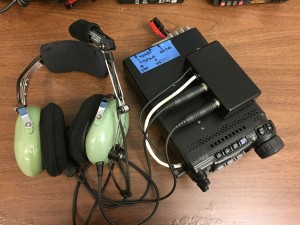
Reflecting on my adapter project, I can’t help but compare it with the timer project–even if that’s not fair on many levels,
The project went pretty much as I expected. The circuit was simple and tested. There weren’t many known unknowns, but there are always the unknown unknowns.
On top of all this, I started the adapter project with a few more years of experience than I started the timer project.
It’s amazing how far in advance you can see the problems when you know what you’re looking for.
Unknown unknowns
They are what keep things interesting. In this case, it was the white Cat-5 Ethernet cable I used to connect to the radio. This cable has the double advantage of being inexpensive and having the connector attached. It has eight conductors arranged as four twisted pairs. The catch is the pairs make sense for the signals they are designed to carry, not my application. Bottom line, they pairs are not connected in a 1,2,3, 4… order, but as 3,4,5,6,1,8,2,7. Not the order I expected (even after researching the cable).
Measure twice, cut once, is how the carpenter’s saying goes. For this project it might have been better phrased, Measure twice, cut once, and then test two or three times.
Fortunately, no harm came to the project or the radio to which I connected and tested it (i.e. I was very lucky).
The biggest challenge was in the mechanical design, not the electrical design. I spent most of the time finding components and fitting them into as small of a box that I could. Arranging the components on the circuit board to line up the microphone-level adjustment potentiometer beneath the headphone jack was another mechanical challenge. Doing all this before drilling holes in the rather expensive ($17) case was another challenge.
Unfair comparisons
How did this project compare to the timer project?
- Complexity: This had far fewer components and a much simpler function than the timer.
- Tools: This project was designed and tested on the computer and built on tried and tested circuits whereas the timer was built and the components were fitted without any computer assistance.
- Information: I was able to obtain electrical and mechanical information online to support the computer testing and design for this project and while this information was also available for the components used in the timer, it had to be applied manually (i.e. copied from a book).
- Experience: Like I said, this wasn’t really a fair comparison. This was built with the help of many years of project experience.
- Tooling: In this case, the comparison is actually fair in that both projects were fabricated with simple hand tools. It would have been nice to make a printed circuit board, make the holes with a drill press, and use something besides plumbers’ tape, but it wasn’t necessary.
So far, the adapter has been working as designed for the past two years, and still looks pretty good (even if I do say so, myself).
